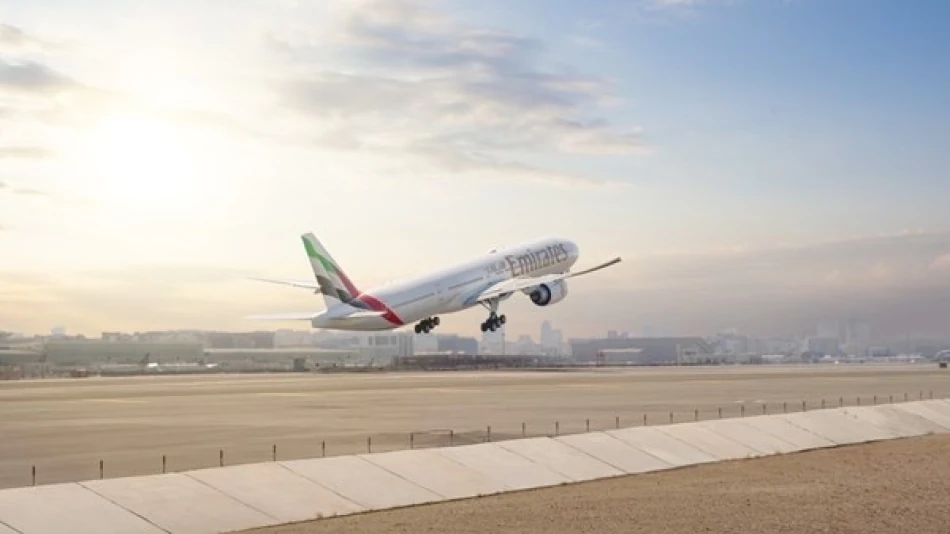
Emirates Airlines Bans Use of Portable Device Chargers on Flights
Emirates Airlines Tightens Battery Rules: New Charging Device Restrictions Signal Growing Aviation Safety Concerns
Emirates Airlines has announced a significant policy shift that will ban portable charging devices from being used during flights starting October 1, 2025, while limiting passengers to carrying just one charging unit under 100 watt-hours capacity. The move reflects mounting industry-wide concerns about lithium battery safety risks at altitude and positions Emirates as a pioneer in proactive aviation safety measures.
The New Policy Framework
Under the updated regulations, Emirates passengers will face two key restrictions: a complete prohibition on using portable charging devices during flight operations, and a strict limit of one charging device per passenger with capacity capped below 100 watt-hours. This capacity threshold effectively eliminates most high-powered laptop chargers and large power banks from Emirates cabins.
What 100 Watt-Hours Actually Means
The 100Wh limit translates to roughly 27,000mAh for standard 3.7V lithium batteries—covering most smartphone power banks but excluding gaming laptop chargers, professional camera batteries, and industrial-grade portable chargers. This technical specification aligns with existing International Civil Aviation Organization guidelines but goes further by banning in-flight usage entirely.
Aviation Industry Context and Safety Rationale
Emirates' decision comes amid increasing reports of lithium battery incidents in commercial aviation. The Federal Aviation Administration recorded over 340 battery-related incidents on aircraft between 2006 and 2023, with thermal runaway events posing particular risks in pressurized cabin environments where emergency response options are limited.
The timing also coincides with several high-profile incidents involving overheating power banks and charging devices on international flights, prompting aviation authorities worldwide to reassess existing battery policies. Unlike previous reactive measures, Emirates is implementing restrictions before experiencing major incidents—a strategy that could influence industry standards.
Competitive Implications for Gulf Aviation Hub
This policy positions Emirates ahead of regional competitors Qatar Airways and Etihad in safety positioning, but potentially at a customer convenience cost. Business travelers and digital nomads—key demographics for Emirates' premium services—rely heavily on in-flight charging for productivity during long-haul flights to Asia and the Americas.
Market Differentiation Strategy
The restriction could paradoxically become a marketing advantage if positioned correctly. Safety-conscious travelers may prefer Emirates' proactive approach, especially corporate clients with strict risk management protocols. However, tech-savvy passengers might migrate to competitors offering more flexible charging policies.
Global Aviation Policy Trends
Emirates' move mirrors broader regulatory tightening across aviation markets. The European Union Aviation Safety Agency recently updated battery transport guidelines, while the U.S. Transportation Security Administration expanded restrictions on lithium batteries in checked luggage. Emirates appears to be anticipating rather than reacting to regulatory changes.
Singapore Airlines and Cathay Pacific have implemented similar but less restrictive policies, focusing on usage monitoring rather than outright bans. Emirates' approach suggests the airline believes current industry measures are insufficient for emerging battery technologies and higher-capacity devices entering the consumer market.
Passenger Impact and Adaptation Strategies
The October 2025 implementation date provides nearly a year for passenger adaptation and potential policy refinements. Frequent Emirates travelers will need to adjust travel strategies, potentially investing in lower-capacity backup batteries or relying more heavily on seat-power outlets where available.
For Emirates' aircraft retrofit programs, this policy reduces cabin electrical load and potentially extends aircraft battery life—creating operational cost benefits that could offset any passenger satisfaction impacts. The airline's extensive first and business class seat-power infrastructure may help mitigate passenger inconvenience for premium travelers.
 Layla Al Mansoori
Layla Al Mansoori







